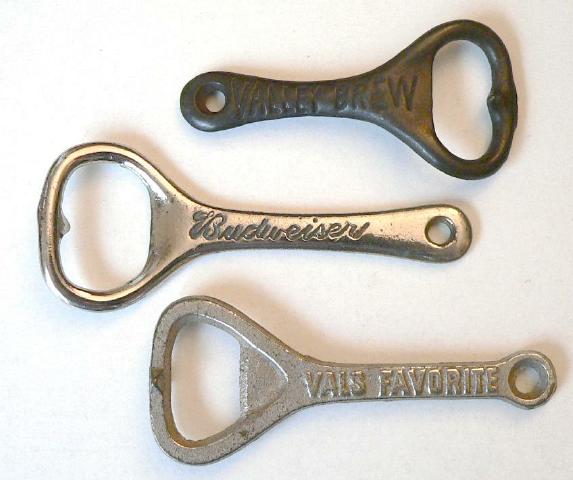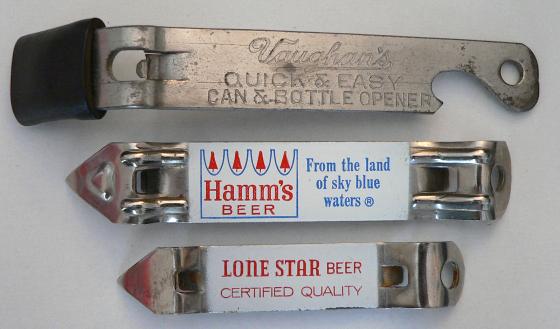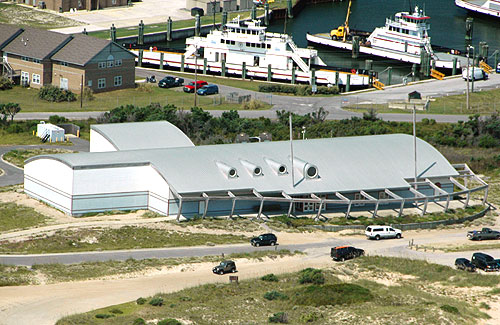Lives shift with the sand
ADVERTISEMENT 
HATTERAS VILLAGE -- When she felt her house go off the blocks and start to float, Betty Austin watched from upstairs.
Named after her grandmother, born and raised here on what used to be high ground, Austin, 84, has ridden out hurricanes before. Just not like Isabel.
As the tide surged up from the wrong direction on the afternoon of Sept. 18, 2003, she watched her deceased sister Pauline's house spin around and bump her roof. The water tossed an old shad boat into the yard and kept coming, up over the family plot at the top of the hill, where her aunt and uncle, among others, were buried.
"His coffin was washed out of the ground. Can you believe it?" Austin said. "Her coffin was washed away in the sound. They never did find it."
On a one-way sand lane that bears her family name, Austin has spent a warm June morning battling the overgrowth around her still-vacant home, swatting mosquitoes and stepping over an occasional toad.
The daughter of an Ocracoke lightkeeper, Austin speaks in the handsome waterman's brogue that goes back 350 years on the barrier islands.
Time is pronounced "toyme," life is "loyfe." Phrases that are elsewhere uprooted, consigned to nursery rhymes ("A-hunting we will go...") still see everyday use.
But after years of working as a desk clerk at the motels that lined the receding shore, Austin's brogue is thinning out, sanded down the way the surf smoothes the edges of a seashell.
"Everything's changed, even in my lifetime," Austin said, walking between gnarled trees on a path made of old millstones, now leading nowhere.
"The trees are not doing too well because of the salt air. The sound's close. The ocean's closer. That's just what it is."
What it is, is change — the one constant on the barrier. The story is told in high water marks, like the rings of a live oak.
In time, names and exploits run together — Gloria, Hugo, Fran, Floyd, Dennis. And of course, Isabel, which gouged out a new inlet, splitting Hatteras Island in two.
Intrepid TV announcers in Gore-Tex parkas flock to these violent events, ranked by "worst" and "second worst," tallied in dollars and death.
But there's violence in birth, as well. After all, the enormity of wind and water that destroy the Outer Banks, storm by storm, are the same forces that landed the narrow strand here in the first place.
So for each act of destruction, a corresponding creation. At least, that's one way to read the tale of the East Coast's only ghost town: the life and death of Portsmouth.
They named it, of course, after the city they left in England, and 300 years ago, it was a shipping hub.
Among the key ports on the seaboard, it was an early European foothold after the mysterious disappearance of the Lost Colony on nearby Roanoke Island, well before Jamestown.
But no one is planning a visit from the queen. No, these days, other than colonies of pelicans and Great Herons, swarms of mosquitoes and biting green flies, the only inhabitants of Portsmouth are a couple of volunteer caretakers for the Park Service, living at the old Lifesaving Station for two months.
This was their day off.
"It's so dark here at night, you can see the lights from Ocracoke, and it looks like a big city," said Chapel Hill resident Jill Snyder, who waited with fellow volunteer John Andrews at the dock for a boat ride, the only way off the island.
"This is completely away from the modern world."
Once a week, they haul their garbage out and their drinking water in. They use a generator for electricity, and pick up three TV stations with a rabbit-ear antenna, off and on.
Aside from their presence to guide the more adventurous tourist during high summer, this is a deserted island — a paradisiacal piece of green pasture and blue sea, with a schoolhouse, a post office and a church with a steeple.
Open the doors, and there aren't any people. At the Salter House that greets visitors, it looks as if they left in a hurry, leaving a Time magazine with Gov. Dewey on the cover, and a shelf of books including "Uncle Wiggly on Sugar Island" and "Robinson Crusoe."
But unlike Portsmouth's predecessors at Roanoke Island, there's no mystery where they went, and how this twilight place came to be.
In the middle of the 19th century, a hurricane punched two new passages further north on the banks, creating Hatteras and Oregon inlets. Portsmouth, where the big ships from the Atlantic used to offload their cargo at one end, pass through the shallow channel and reload on the other side, was no longer needed.
The old families hung on through the Civil War, through too many hurricanes and nor'easters to name. But finally, the population grew thinner, and only three people lived there by the 1970s, two women and a man.
When the man died, the women finally left, and the last person who was born in Portsmouth, Jessie Lee Dominique, died in 2005.
"Jessie Lee didn't like when people called it a 'ghost town,'" Chester Lynn was saying last week about the place where he puts on a homecoming every year, and still decorates the empty houses at Christmas, with cedar berries and ribbon.
"A lot has happened," Lynn reflected, "but this is a place where time stood. It's not a ghost town. It lives in our hearts."
Lynn, who can trace his ancestors at Portsmouth back to the 1790 census, as a boy spent summers with relatives in Portsmouth. It was a village so quiet that people watched what they said because the sound carried so. Every door was unlocked at every house — or "hice," as Lynn puts it.
Sitting in his antique and flower shop across the sound at Ocracoke, he's surrounded by his past — piles of typewritten oral histories he's read so many times, he's memorized them.
He takes out an old photograph of a ship run aground on the beach with a crowd of people walking toward it. The islanders would dismantle shipwrecks down to the ribs, like blubber off a whale, and use the teak, walnut and mahogany on their houses.
Then, when children grew up and left the nest, the parents would downsize their houses, tearing down extra rooms they no longer needed.
Everything was for survival. If they found a turtle, it went in the pot. The trees on the island were chopped down for lumber. They didn't build their houses on stilts: Coming from the other side of the Atlantic, they never dreamed what a hurricane could do.
Lynn, with no more to guide him than fragments of fencepost foundations and chimneys, has been helping archeologists reconstruct the layout of Portsmouth, and find five lost graveyards. If he succeeds, he wants to be buried in Portsmouth.
But up the coast at Hatteras, the future is more tenuous for the daughter of the Ocracoke lightkeeper, the youngest of seven children, the only one left. Betty Austin's son started repairing his mother's house after Isabel, but had to go back to work and earn a paycheck.
"By the time it's done, I'll be in the grave," Austin says, casting an uncertain glance toward the family plot, where some of the graves washed away.
When Austin saw the water coming, she took the quilts her mother made — back when people had time to "quilt" — and stowed them on the top shelves upstairs. Did Isabel take anything precious to her?
Austin's eyes narrow at the question: "Yeah," she says. "My car. A Mercury Capri."
When she wakes up in the morning, she looks out at the ocean and, out of habit, counts the boats on the horizon. This is home, where the land meets the sea.
And the sea is so much closer now, the land thinning out, getting lighter, getting ready for the next migration.
"I hate to see it happen," she says. "But it's gonna wash away, eventually. It has to."
Contact Lorraine Ahearn at 373-7334 or lahearn@news-record.comBlogged with Flock


















